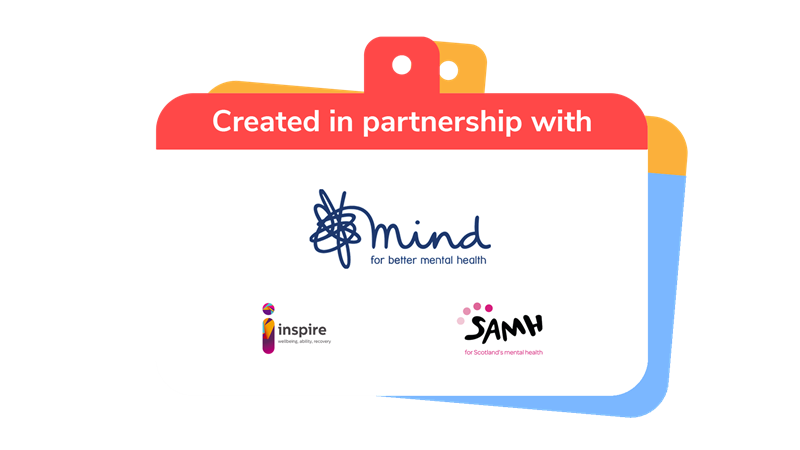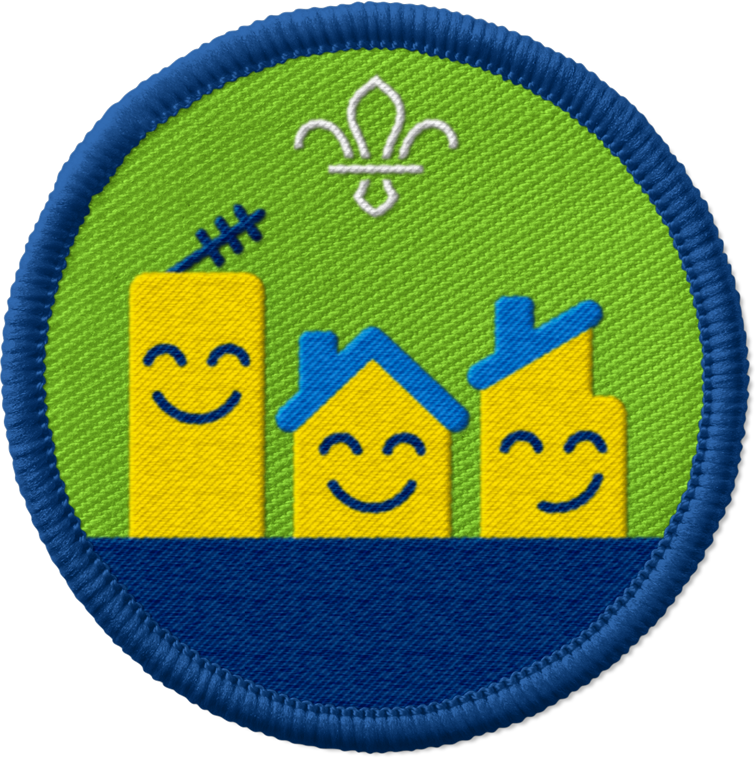
Build a wellbeing box
You’ll need
- Coloured pens or pencils
- A4 paper
- Glue sticks
- Scissors
- Craft materials (for example, tissue paper, pipe cleaners, stickers)
- Cardboard box (why not use a shoebox?)
- Items to fill the wellbeing box
Before you begin
- Use the safety checklist to help you plan and risk assess your activity. Additional help to carry out your risk assessment, including examples can be found here. Don’t forget to make sure all young people and adults involved in the activity know how to take part safely.
- Make sure you’ll have enough adult helpers. You may need some parents and carers to help if you’re short on helpers.
Planning this activity
- Shoeboxes work well for individual boxes – you could ask everyone to collect them at home.
- If you want to, rather than asking people to bring in items from home, you could just provide a wide range of items for people to choose from during the session. You could also ask people to take the box home and fill it, then focusing on decorating the box during the session.
Plan the boxes
- Everyone should think about messages that make them feel good. Do people have any favourite quotes or song lyrics? What would they say to a friend who’s having a bad day?
- Ask people to think about objects that make them feel happy or relaxed. They should choose things that are small enough to fit in a shoebox. The things could remind people of a favourite memory, help them do a relaxing activity, or just make them giggle. For example, a favourite book, a small cuddly toy, colouring pencils and paper, a funny photo of friends or a pet, fidget toys, a list of favourite films, stress balls, nice-smelling products, or nail varnish. These are just some ideas – there are plenty more great choices.
- Everyone should plan how they’ll get hold of these items to make a wellbeing box. Perhaps they could bring some from home – make sure people know when they’ll be taking their boxes home again. If they won’t take them home the same day, it’s probably best not to bring their favourite teddy or the fidget toys they use every day.
Make the boxes
- Everyone should cover their box – wrapping paper works well, but scraps of fabric or unwanted posters look great. Make sure to cover the lid separately, so it can still open and close.
- Now, decorate their box. They should feel free to be creative – what makes them feel happy, safe, or calm.
- Write or draw positive messages on pieces of paper and pop them into their box. You could also write down jokes, use quotes, scribble down song lyrics, or draw pictures to make you smile.
- Everyone should fill their box with other items. They may have brought things from home, or as a Scout Group you may have provided some things for everyone to use.
Share the boxes
- Everyone should take it in turns to show off their box and share some of the things they’ve put it in. If they want to, people could share why they chose certain items – do they make them feel a certain way? Did lots of people include the same item?
- Remind everyone that their boxes can be a ‘work in progress’ – they can take things out and add new things as they want, perhaps as their favourite things change or they try new ways to relax.

This activity helps contribute towards some of the UN's Sustainable Development Goals. Find out more about the SDGs, and how Scouts across the world are getting involved.



Reflection
This activity helped everyone to boost their wellbeing. Everyone feels down sometimes, and everyone has had days. Do people think their boxes will help them bounce back when things get tough? Remember, it’s OK if positive wellbeing activities can’t make it better: people can always reach out to a trusted adult, GP, or Childline. Why did people choose to put these items in their boxes? Was it easy to think of items and messages that may help when things feel tricky?
This activity also encouraged people to care. Did anyone make or write something for someone else’s box? How did it feel – was it easier or harder than writing a message for their own box? Can people think of anyone else who may really benefit from a wellbeing box? How could they share what they’ve learned with others? Perhaps everyone could work towards making more boxes for people who need them, or they could talk to their friends about the idea and encourage them to make their own wellbeing boxes at home.
Safety
All activities must be safely managed. You must complete a thorough risk assessment and take appropriate steps to reduce risk. Use the safety checklist to help you plan and risk assess your activity. Always get approval for the activity, and have suitable supervision and an InTouch process.
- Scissors
Supervise young people appropriately when they’re using scissors. Store all sharp objects securely, out of the reach of young people.
- Glue and solvents
Always supervise young people appropriately when they’re using glue and solvent products. Make sure there’s plenty of ventilation. Be aware of any medical conditions that could be affected by glue or solvent use and make adjustments as needed.
- Rubbish and recycling
All items should be clean and suitable for this activity.
- Sharp objects
Teach young people how to use sharp objects safely. Supervise them appropriately throughout. Store all sharp objects securely, out of the reach of young people.
You could theme the boxes – for example, ‘only handmade things’, ‘nature’, ‘literature’, or ‘senses’ (using textures, smells, noises, and so on).
- Mental health is complicated – positive wellbeing activities can’t always make mental health problems better (no matter how great they are). This isn’t anybody’s fault, and it’s always OK to need some more support for mental health problems. Remind people that talking to a trusted adult, a GP, or Childline are all great places to start (and always follow the Yellow Card).
- Be sensitive if anyone has experience of mental health problems. Let them (and their parents or carers) know about the activity in advance and find out if there are any topics you should avoid. People only have to share as much as they want to. No one has to share their deepest secrets or feelings if they feel uncomfortable – they can still chat about their wellbeing and things that help on a day-to-day basis.
- It’s OK if people want to keep some of their box private – they don't have to share everything they included.
All Scout activities should be inclusive and accessible.
If the group’s already tried Five ways to wellbeing chatterbox or Take a shake break (or they’re planning to give one a go), their wellbeing boxes are a great place to store chatterboxes and mindfulness jars.
Why not make more wellbeing boxes to give away to others? People could choose a specific person (such as a family member or friend) and personalise the box for them, or you could make some to donate to local mental health support projects, youth clubs, or schools.
Discover more at https://www.mind.org.uk/

